One can hardly find a more colorful tree than the 'Desert Museum' palo verde, with its distinctive green trunk and yellow flowers that appear in spring. Although there are several species of palo verde, 'Desert Museum' has the best attributes, including that it is thornless, has a lovely vase shape and flowers over a long period of time.
The product of three other species of palo verde that grow naturally near Tucson, 'Desert Museum' is quickly becoming a star in the landscape and is now being used beyond the desert's borders in areas such as Southern California. As if those reasons weren't enough to make you want to add one to your landscape, this type of palo verde is drought tolerant and grows quickly.
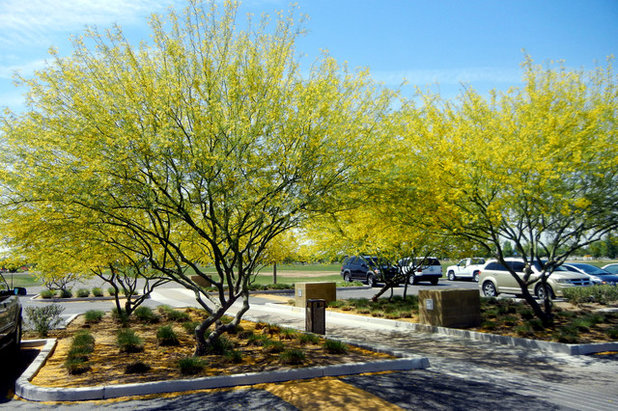
Noelle Johnson Landscape Consulting
Botanical name: Parkinsonia x ‘Desert Museum’ (syn
Cercidium x ‘Desert Museum’)
Common name: ‘Desert Museum’ palo verde
Origin: Native to Arizona
Where it will grow: Hardy to 15 degrees Fahrenheit (USDA zone 8; find your zone)
Water requirement: Low
Light requirement: Full sun
Mature size: 25 feet tall and wide
Benefits and tolerances: Drought tolerant once established
Seasonal interest: Flowers in spring and may continue sporadically throughout summer and into fall
When to plant: Fall or spring
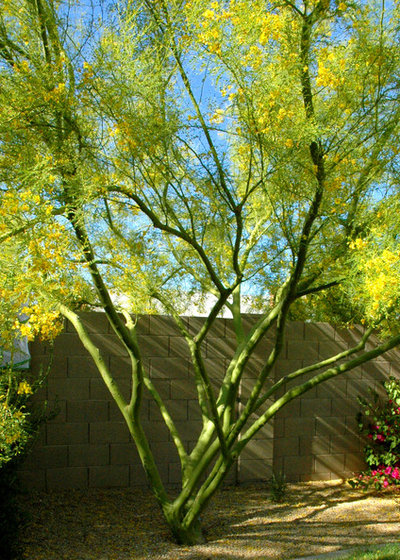
Noelle Johnson Landscape Consulting
Distinguishing traits. The most recognizable trait of any palo verde tree is its green trunks and branches. Tiny green leaves create an airy canopy, which produces filtered shade underneath.
'Desert Museum' has the best attributes of its three parents — Mexican palo verde (
Parkinsonia aculeata), blue palo verde (
Parkinsonia florida) and little leaf palo verde (
Parkinsonia microphylla) —
with a bright green trunk, larger flowers and a more upright growth habit.
Unlike its parents, 'Desert Museum' is thornless, which makes it suitable for pedestrian areas; it is most commonly grown as a multitrunked tree.
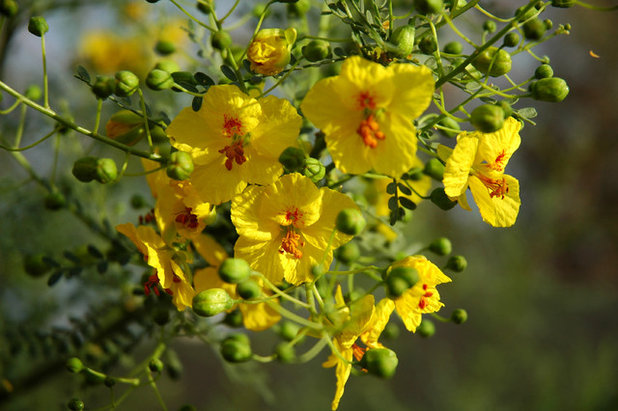
Noelle Johnson Landscape Consulting
Bright yellow flowers appear in midspring and can continue intermittently through summer and into fall.
All palo verde trees are drought deciduous, meaning they shed their leaves during periods of extended drought. Their green trunks continue to carry on photosynthesis in the absence of leaves, allowing the tree to survive until rainfall arrives.
Because 'Desert Museum' is a hybrid, it cannot be grown from seed. It is propagated via cuttings.
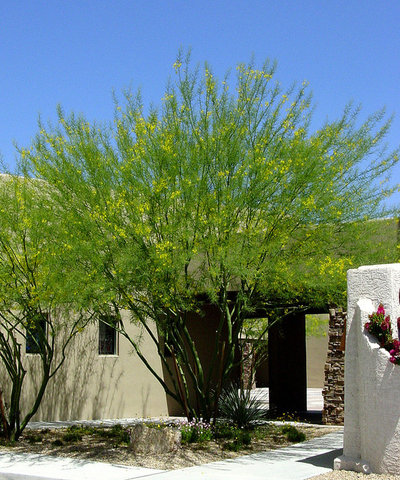
Noelle Johnson Landscape Consulting
How to use it. Plant it in areas where filtered shade is desired. 'Desert Museum' palo verde trees do well in areas with full sun and reflected heat, which makes them the perfect tree for paved areas, where their wide canopy creates welcome shade.
This beautiful tree provides a focal point in the landscape when planted singly or in a row.
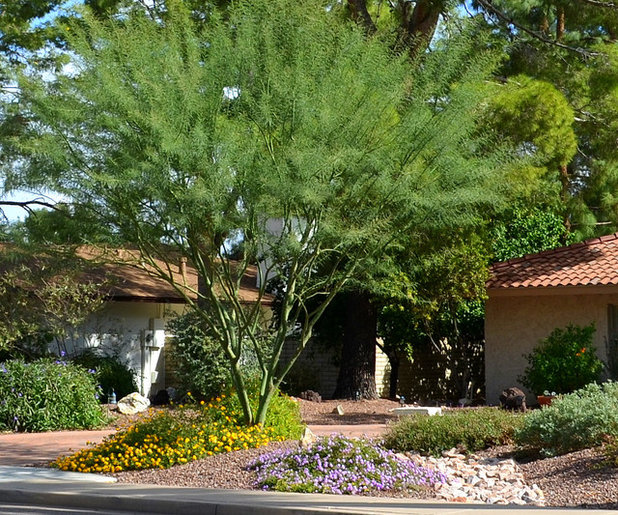
Noelle Johnson Landscape Consulting
Many flowering plants enjoy protection from the hot desert sun when planted underneath the filtered shade of 'Desert Museum' palo verde.
Gold lantana and
purple trailing lantana (
Lantana montevidensis)
make beautiful additions to the arid landscape, but they do appreciate some relief from the desert sun.
Autumn sage (
Salvia greggii)
looks beautiful planted around the base of the tree and will appreciate the filtered shade during summer.
Shown: 'Desert Museum' palo verde with flowering gold and purple lantana
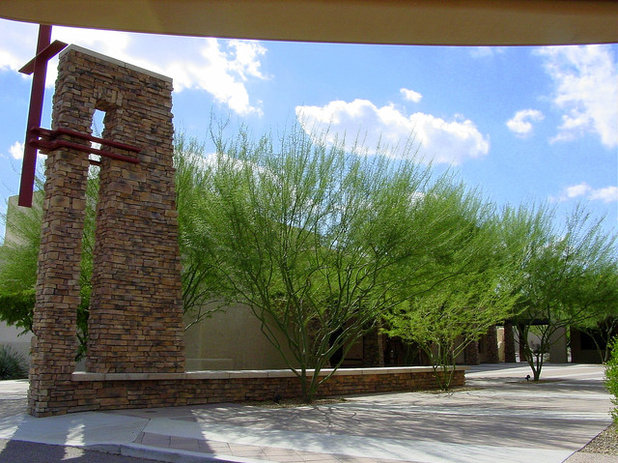
Noelle Johnson Landscape Consulting
Planting notes. Plant this tree in well-drained soil and in full sun. The hole should be at least three times wider then the root ball, which will help the roots grow outward. The depth of the hole should be
no deeper than the root ball.
Don't waste money on buying a large tree. Because it grows quickly, a 15-gallon tree will soon catch up with a larger box tree once it's planted in the ground.
Prune in summer, after flowering slows down, concentrating on maintaining its vase shape.
Although it's drought tolerant, 'Desert Museum' palo verde does appreciate periodic deep watering. Be careful not to overwater, which can lead to limb breakage.





